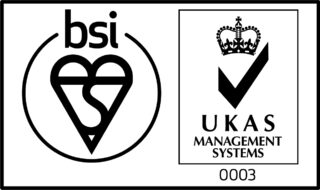An interview with Richard Stansfield – the new Chair of CATCH

David Talbot – CEO – ” First of all I would like to pass on my thanks on behalf of the whole CATCH Team to Brendan Conlan who held the position of Chair for some 4 years. Brendan’s legacy as Chair has been to drive forward the STEM agenda for young people looking for a career in industry, and to raise the profile of CATCH to ensure it represents the needs of industry at the highest level on a regional and national stage. As a team we would like to welcome Richard as the incoming Chair. He brings with him a deep understanding of the region’s economic landscape, coupled with a long standing relationship with CATCH, which means that he is the ideal person to continue to steer CATCH on its growth strategy, supporting CATCH members, wider stakeholders and our regions”.
We asked Richard a few questions about his background and taking on the role of steering CATCH –
Please tell us about your background:
I have been the CEO of Singleton Birch Limited for almost 10 years. The Company has been based at Melton Ross in North Lincolnshire since the 1850s and was established over 200 years ago. It’s largest shareholder in the early 1900s was Lionel Martin, the founder of Aston Martin, and his ‘hobby’ was funded by his dividends from Singleton Birch. His wife inherited his shares when he died and she subsequently left the shares in her will for the benefit of three charities, Barnardos, The NSPCC and the RSPCA. The Katherine Martin trust which represents these charities still owns 50% of the shares in the company.
I joined Singleton Birch Limited as a Trainee Quarry Manager when I was 21 having received sponsorship and work experience with the company during my student years studying engineering. The company’s sole focus at the time was producing lime, a generic term for calcium carbonate, calcium oxide and calcium hydroxide. Around 90% of the output was going to British Steel at Scunthorpe and as a consequence the Company’s fortunes rose and fell with the cyclic nature of the steel sector. Over the next 30 years the business diversified its product base across many different sectors, lime being a ubiquitous chemical found in most everyday items. In particular the business focussed on developing calcium hydroxide products for water treatment and environmental protection. Today the business supplies around 25% of its products into steel and has developed businesses in renewable energy, waste, chemicals and logistics.
Lime production is energy and carbon intensive and the biggest challenge for the Company is to remain competitive and relevant in an increasingly low-carbon economy. Our diversification drive dovetailed with our need to reduce our environmental impact and the development of an aerobic digestion (AD) plant at our Melton Ross site not only provided the site with low carbon energy but also led to the construction of two more plants for other customers and the establishment of a national servicing business for other AD facilities. We are also involved in several carbon capture projects for our kilns with the ultimate aim of becoming carbon negative as many of the lime products we produce also capture carbon from the atmosphere in use.
Talking about your new role, what excites you the most about your position as chairman of CATCH?
Having been involved with the Humber Chemical Focus in its early days its very satisfying to see how the organisation has developed and grown in recent times both in terms of the facilities and the services provided, throughout the Yorkshire and Humber regions. Notwithstanding the Covid crisis the organisation is on an upward trajectory and these are extremely interesting times to be involved with the leadership of Catch.
How can cluster organisation like CATCH ensure we are responsible and continue to contribute to the success of the industry we represent?
The board is made up of senior leaders from member companies representing some of the biggest businesses across the Humber region. This provides a powerful voice for industry which can help influence and shape industrial strategy for the area and attract much needed investment, particularly in relation to the decarbonisation of the economy.
What would you like to achieve with CATCH in the next few years?
As well as see the development of a nationally recognised centre of excellence for our industry I think the current involvement of CATCH at the heart of the Industrial Decarbonisation Network represents an important development for the organisation. It would be fantastic if in a few years time we are seeing significant decarbonisation of energy intensive industry in the Humber region and CATCH has been a significant contributor to that transformation and a forerunner for the UK.






